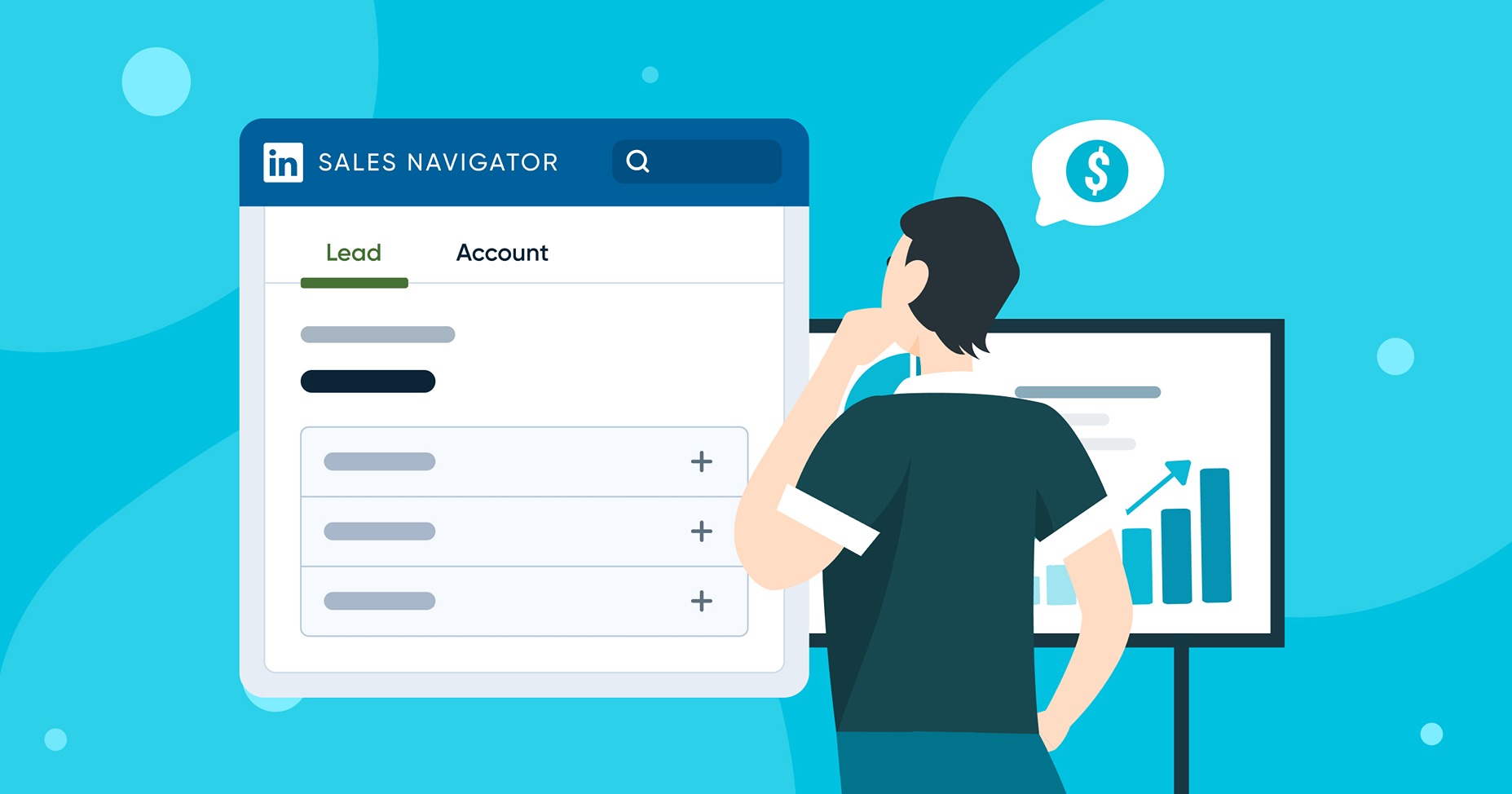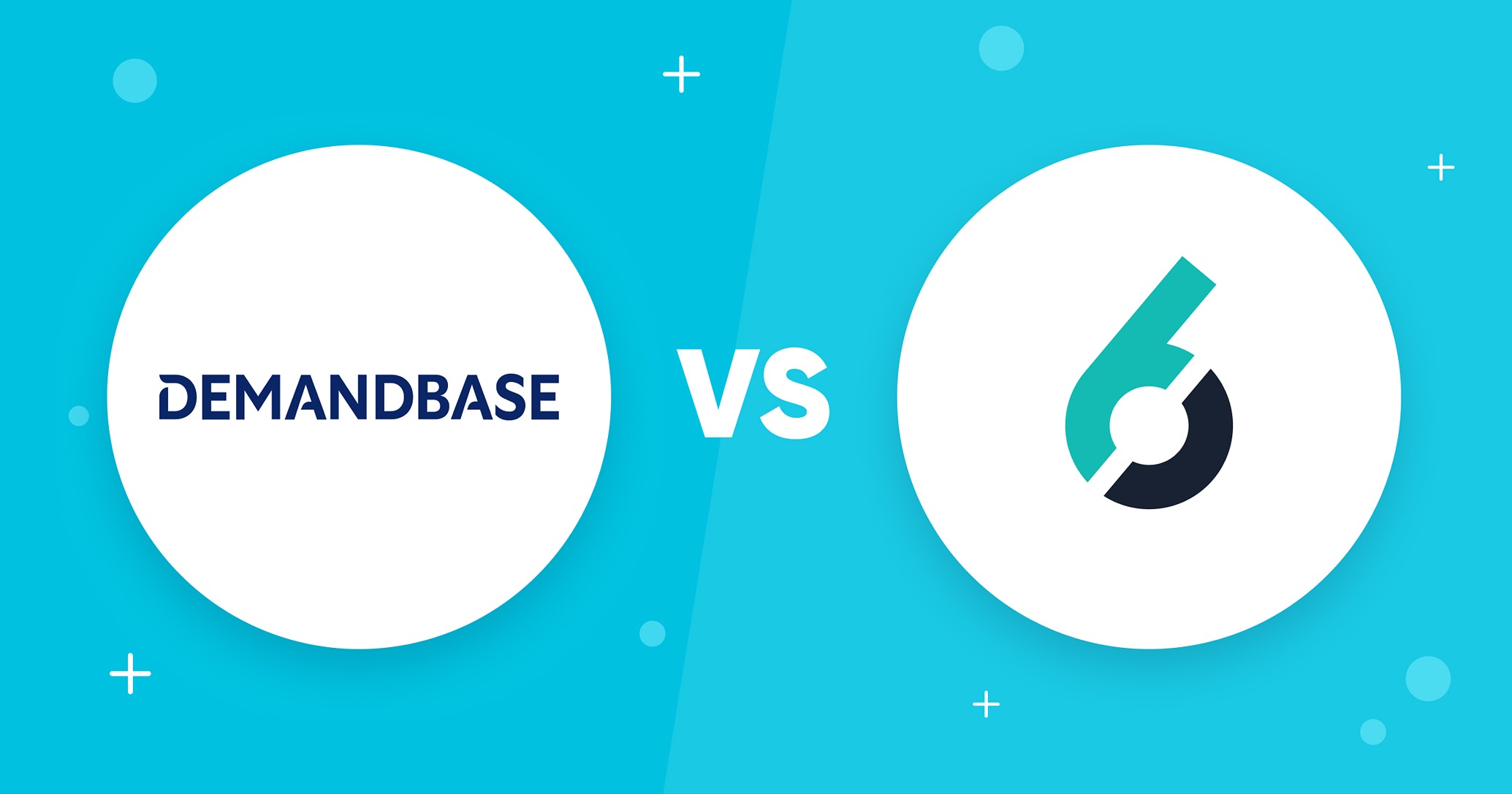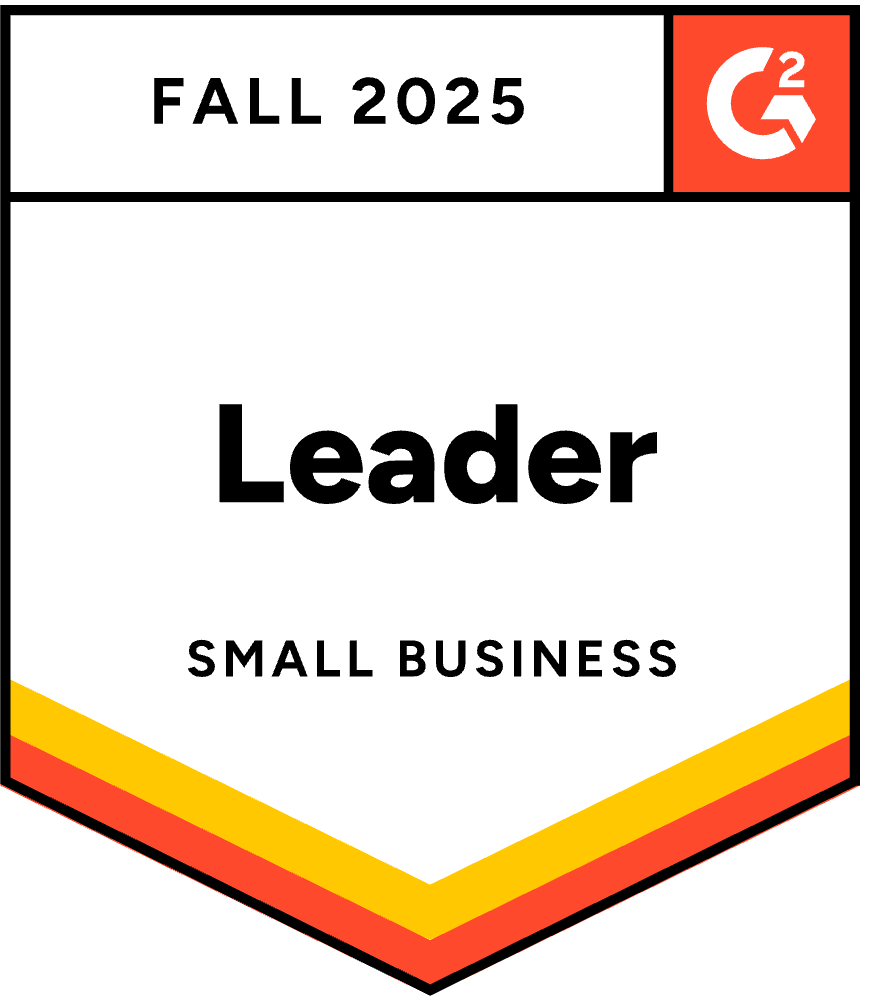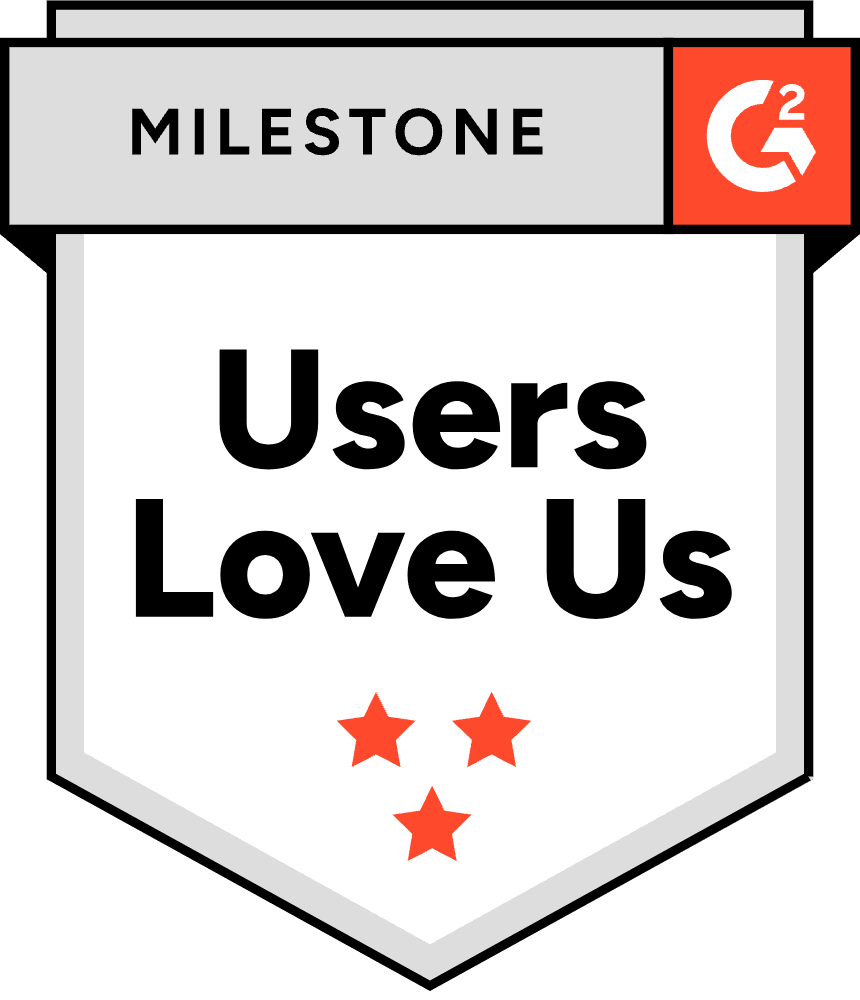Does cold calling work? If you’re reading this article, then it’s likely that you’ve had some struggles reaching and engaging decision-makers. Perhaps you might even doubt the effectiveness of cold calling as an outbound prospecting tactic. Cold calling is a challenging yet critically important outbound sales skill for any salesperson. While it can be daunting, especially to newcomers, it can effectively reach new prospects and generate leads. Even today, the time-tested strategy still works.
If you’re struggling to book appointments and generate leads with cold calling, don’t worry; you’re not alone. The key to successful cold calling is to have a well-crafted script that introduces yourself, explains your product or service, and overcomes objections.
📌 Reminder: At times, the lack of replies to your cold emails is not because of your copy. Your list matters too. Target the right prospects with mobile direct dials. Try UpLead and get 5 mobile direct dials of your B2B prospects for free!
This article includes eight proven cold calling scripts to help you secure more appointments and close more sales. Here’s what to expect if you keep reading:
- 8 cold call scripts to get appointments
- How to use a cold call script to get appointments
- Why sales teams love UpLead for cold calling prospects
- Frequently asked questions
Let’s get started.
8 Cold Call Scripts to Get Appointments
Below, you’ll find 8 of the best cold call scripts to get appointments.
1. The “I Do My Research” Approach
When to Use It:
Use this script when you have time to research a prospect and want to build rapport with them.
Why It’s Effective:
Prospects are more likely to be receptive to calls from someone who has taken the time to learn about their business. According to LinkedIn’s 2022 Global State of Sales report, 76% of top-performing salespeople state they “always” perform research. A personalized approach to cold calling shows prospects that you’re not just making a generic sales pitch. This approach helps to build rapport, increase trust, and improve your chances of getting an appointment.
Example Cold Call Script:
Hi [prospect’s name], this is [your name] from [your company]. I’m calling because I saw that you recently launched a new product line.
[Pause]Option A: If the prospect confirms, proceed to the next stage of the conversation. If they say they’re unfamiliar with the product line, explain it briefly and then proceed to the next stage of the conversation. If they say they’re not interested in talking about it, politely apologize for taking their time and end the call.
Option B: If the prospect doesn’t respond or seems unsure, ask them if they have a few minutes to chat about their new product line. If they say yes, proceed to the next stage of the conversation. If they say no, politely apologize for taking their time and end the call.
I’ve been following your company for some time now, and am really impressed with what you’re doing.
[Pause]Option A: If the prospect thanks you or says something positive, acknowledge their comment and proceed to the next stage of the conversation. If they don’t respond or seem indifferent, move on to the next question.
Option B: If the prospect asks what you’ve been impressed with, briefly highlight a few things that you’ve noticed about their company that you find impressive. This will show them that you’ve done your research and that you’re genuinely interested in their business.
I’m curious to learn more about your marketing goals for this new product line. What are some of the challenges you’re facing?
[Pause]Option A: If the prospect is open to discussing their marketing goals, actively listen to their responses and ask clarifying questions to understand their needs and challenges better.
Option B: If the prospect is hesitant to share their marketing goals, try to rephrase the question in a less direct way. For example, you could ask: “What are your hopes for the success of this new product line?” or “What are some of the things you’re hoping to achieve with this new product launch?”
At [your company], we help companies like yours automate their marketing campaigns, track their results, and generate more leads. We’ve helped other businesses in your industry achieve significant results, and I’m confident that we can help you do the same.
[Pause]Option A: If the prospect expresses interest, briefly explain how your software can help them achieve their marketing goals. Be specific and provide examples of how you’ve helped other businesses in their industry.
Option B: If the prospect seems skeptical, send them a case study or other resource demonstrating your company’s success in helping businesses like theirs.
I’d love to schedule a demo to show you how our software can help you promote your new product line. How about next Tuesday at 10 am?
[Pause]Option A: If the prospect is available, confirm the appointment and send them a calendar invitation.
Option B: If the prospect is unavailable, ask for a few alternative times that work for them. If they still can’t find a time that works, offer to send them a link to a scheduling page where they can choose a time that works for them.
Option C: If the prospect is not interested in scheduling a demo, thank them for their time and ask if there is anything else you can help them with. If there is not, politely end the call.
2. The “Gatekeeper Script”
When to Use It:
This script should be used when you’re trying to reach a decision-maker but have to go through a “gatekeeper.”
Why It’s Effective:
Being polite and respectful shows the gatekeeper that you are a professional. Speaking clearly and concisely shows you appreciate their time. Having a specific reason for calling shows you are genuinely interested in the company. These actions create a positive impression and increase the likelihood of gaining access to the decision-maker.
Example Cold Call Script:
Hi [gatekeeper’s name], this is [your name] from [your company].
[Pause]Option A: If the gatekeeper asks who you are or what your company does, briefly explain your name, your company, and the purpose of your call.
Option B: If the gatekeeper asks to transfer you to the voicemail of the decision-maker, politely decline and request to speak with the gatekeeper directly. Explain that you’ll only take a few minutes of their time and that you believe your message is relevant to the decision-maker.
I’m calling because I’d like to speak with [decision-maker’s name] about [brief description of your product or service].
[Pause]Option A: If the gatekeeper says they’re not sure if [decision-maker’s name] is the right person to speak with, ask if they can suggest someone else. If they can’t, politely request to be connected with [decision-maker’s name] anyway and explain that you’ll be brief.
Option B: If the gatekeeper says [decision-maker’s name] is not available, ask if there is a better time to call back. If not, politely request to leave a message for [decision-maker’s name] and ask if there is any specific information you should include in the message.
I know they’re busy, so I’ll keep this brief. I’ve done some research on [company name], and I believe that we can help you achieve your goals in [specific area].
[Pause]Option A: If the gatekeeper is receptive, briefly explain how your product or service can help the company achieve its goals. Be specific and provide examples of how you’ve helped other businesses in their industry.
Option B: If the gatekeeper seems skeptical, offer to send them a case study or other resource that demonstrates your company’s success in helping businesses like theirs.
Is there a good time to call back and speak with [decision-maker’s name]?
[Pause]Option A: If the gatekeeper is willing to connect you with the decision-maker, thank them for their time and confirm the appointment. Send a calendar invitation to the decision-maker immediately.
Option B: If the gatekeeper cannot give you a specific time, ask if you can call back later to check their availability. If not, politely thank them for their time and request they leave a message for [decision-maker’s name].
Option C: If the gatekeeper says they are not authorized to schedule meetings for the decision-maker, ask if they can provide you with their direct contact information. If they cannot, politely thank them for their time and end the call.
3. The “Irresistible Offer” Call
When to Use It:
Use this script if you know your prospect’s pain points and have an adequate solution and limited-time offer.
Why It’s Effective:
According to research, 96% of consumers are most influenced by cold calls that effectively convey the value their products or services offer prospects. People are more inclined to respond to an offer they perceive as valuable; this is why limited-time offers and special promotions are so effective. They create a sense of urgency that motivates people to act quickly, especially if they want to save money.
Example Cold Call Script:
Hi [prospect’s name], this is [your name] from [your company].
[Pause]Option A: If the prospect asks who you are or what your company does, briefly say your name, company, and the purpose of your call.
Option B: If the prospect seems dismissive or uninterested, politely acknowledge their response and proceed to the next stage of the conversation.
I’m calling because I know you’re looking for a way to [solve the prospect’s pain point].
[Pause]Option A: If the prospect confirms that they are looking for a solution, proceed to the next stage of the conversation. If they say they are not familiar with the pain point, briefly explain it and then proceed to the next stage of the conversation. If they say they are not interested in talking about it, politely apologize for taking their time and end the call.
Option B: If the prospect asks what you’ve heard about their pain point, briefly explain your understanding of the situation and how you’ve helped other businesses address similar challenges.
We’re offering a special promotion to new customers for a limited time. For a limited time, we’re offering a 20% discount on our services.
[Pause]Option A: If the prospect expresses interest in the promotion, provide more details about the discount and the timeframe of the offer. Be prepared to address any questions they may have.
Option B: If the prospect seems indifferent to the promotion, focus on the value proposition of your services and how they can address the prospect’s pain point. Reiterate the benefits and outcomes they can achieve with your help.
We’ve helped other businesses in your industry [achieve specific results]. I’m confident that we can help you achieve the same results.
[Pause]Option A: If the prospect is receptive, provide examples of how you’ve helped similar businesses succeed. Share case studies, testimonials, or other quantifiable results to demonstrate your expertise.
Option B: If the prospect asks for more specific examples, tailor your response to their industry and the particular pain point you’re addressing. Highlight the similarities between their situation and the success stories you share.
Would you be interested in learning more about our services and how we can help you solve your [pain point]?
[Pause]Option A: If the prospect is interested, invite them to schedule a consultation or demo to discuss their needs further and how you can help. Provide options for scheduling and emphasize the value they’ll gain from the interaction.
Option B: If the prospect has concerns or hesitations, address them directly and offer to provide more information or resources to address their doubts. Be patient and understanding in their decision-making process.
Option C: If the prospect is not interested, politely thank them for their time and express your willingness to stay connected if their needs change. End the call on a positive note.
4. The “Problem Solver” Script
When to Use It:
This script should be used when you know the prospect’s pain points and have a solution to their problem.
Why It’s Effective:
People are more likely to engage with a salesperson who can solve their problems. Problem-solving skills build rapport and trust, positioning you as an expert and increasing the likelihood that the prospect will learn more about your product or service. Considering that 42% of salespeople feel unprepared for calls, being prepared and ready with a solution can set you apart.
Example Cold Call Script:
Hi [prospect’s name], this is [your name] from [your company].
[Pause]Option A: If the prospect asks who you are or what your company does, briefly explain your name, your company, and the purpose of your call.
Option B: If the prospect seems dismissive or uninterested, politely acknowledge their response and proceed to the next stage of the conversation.
I’m calling because I know you’re looking for a way to generate more leads.
[Pause]Option A: If the prospect confirms that they are looking for a solution, proceed to the next stage of the conversation. If they say they are not familiar with the lead generation challenges, briefly explain them and then proceed to the next stage of the conversation. If they say they are not interested in talking about it, politely apologize for taking their time and end the call.
Option B: If the prospect asks what you’ve heard about their lead generation challenges, briefly explain your understanding of the situation and how you’ve helped other businesses address similar challenges.
We offer a lead generation platform that can help you generate 10x more leads than you’re currently generating. We’ve helped other businesses in your industry achieve significant results, and I’m confident that we can help you do the same.
[Pause]Option A: If the prospect expresses interest, provide more details about the platform, its features, and the timeframe for results. Be prepared to address any questions they may have.
Option B: If the prospect seems hesitant or skeptical, focus on the pain points your platform can address and the tangible benefits it can bring to their business. Reiterate the potential impact of generating more leads.
Would you be interested in learning more about our lead generation platform and how we can help you generate more leads?
[Pause]Option A: If the prospect is interested, invite them to schedule a consultation or demo to discuss their needs further and how you can help. Provide options for scheduling and emphasize the value they’ll gain from the interaction.
Option B: If the prospect has concerns or hesitations, address them directly and offer to provide more information or case studies to address their doubts. Be patient and understanding in their decision-making process.
Option C: If the prospect is not interested, politely thank them for their time and express your willingness to stay connected in case their needs change in the future. End the call on a positive note.
5. The “Quick and Painless”
When to Use It:
This script is a good idea if you’re targeting busy prospects who don’t have a lot of time to talk.
Why It’s Effective:
This script is concise, informative, and focused on the prospect’s needs. It aims to spark interest and schedule a follow-up conversation without overwhelming the prospect with too much information. Research from Gong shows that salespeople who are direct and state their reason for calling are 2.1x more successful.
Example Cold Call Script:
Hi [prospect’s name], this is [your name] from [your company]. I’m calling because I know you’re committed to providing exceptional customer service. That’s why I wanted to share a quick solution to help you take your customer satisfaction to the next level.
[Pause]Option A: If the prospect asks who you are or what your company does, briefly explain your name, your company, and the purpose of your call.
Option B: If the prospect seems dismissive or uninterested, politely acknowledge their response and proceed to the next stage of the conversation.
In today’s competitive landscape, customer satisfaction is the key to success. Happy customers are more likely to return, refer your business, and drive positive word-of-mouth. I’m confident that our solution can help you achieve that level of customer satisfaction.
[Pause]Option A: If the prospect agrees or expresses interest, proceed to the next stage of the conversation. If they disagree or seem unconcerned, politely emphasize the importance of customer satisfaction and how it impacts their business.
Option B: If the prospect asks for more information, provide brief examples of how your solution has helped other businesses improve customer satisfaction.
I’d be happy to schedule a brief call to discuss your specific needs and how our solution can help you elevate your customer satisfaction. Are you available for a quick chat next week?
[Pause]Option A: If the prospect is interested, schedule a brief consultation to discuss their specific needs and how you can help them improve customer satisfaction.
Option B: If the prospect is not available or interested, thank them for their time and express your willingness to connect in the future if their needs change. End the call on a positive note.
6. The “Referral” Method
When to Use It:
Use this script to take advantage of a prospect’s network and connections at their company.
Why It’s Effective:
Internal referrals are a highly effective strategy for cold calling. They build trust and credibility, leading to higher conversion rates and reduced friction. Salespeople can overcome the challenges of cold calling by leveraging the power of existing relationships. There hasn’t been much research done on internal referrals for cold calling, but they’re highly effective for hiring new employees.
Example Cold Call Script:
Hi [prospect’s name], this is [your name] from [your company]. I’m calling because I was hoping you could connect me with someone at [company name] who might be interested in our [product or service].
[Pause]Option A: If the prospect asks who you are or what your company does, briefly explain your name, your company, and the value proposition of your product or service.
Option B: If the prospect seems dismissive or uninterested, politely acknowledge their response and proceed to the next stage of the conversation.
I’ve been following [company name]’s work for some time now, and I’m really impressed with what they’re doing. I believe our [product or service] could be a valuable asset to their team.
[Pause]Option A: If the prospect expresses interest or asks for more information, provide a brief overview of your product or service and how it can benefit [company name].
Option B: If the prospect seems hesitant or skeptical, focus on the specific challenges or pain points your product or service can address for [company name].
I know you have a strong network at [company name], so I was hoping you might be able to connect me with someone who would be a good fit for our product or service. Any suggestions would be greatly appreciated.
[Pause]Option A: If the prospect is willing to make a referral, thank them for their time and ask for the contact information of the person they suggest. Be sure to follow up with the referral promptly.
Option B: If the prospect is not able to make a referral at this time, thank them for their time and ask if they would be willing to keep your information on file in case they hear of anyone who might be interested in your product or service.
Option C: If the prospect is not interested at all, politely thank them for their time and end the call.
7. The “I’ve Been Referred”
When to Use It:
Consider using this script when you have a mutual connection with the prospect and have been referred.
Why It’s Effective:
Prospects are more likely to trust and do business with those referred to them by someone they know and respect. An IDC white paper found that almost 75% of executives prefer to work with sales professionals who come from a mutual connection. Referrals are a powerful way to get past gatekeepers and reach decision-makers.
Example Cold Call Script:
Hi [prospect’s name], this is [your name] from [your company].
[Pause]Option A: If the prospect asks who you are or what your company does, briefly explain your name, your company, and the value proposition of your product or service.
Option B: If the prospect seems dismissive or uninterested, politely acknowledge their response and proceed to the next stage of the conversation.
[Mutual connection’s name] referred me to you.
[Pause]Option A: If the prospect asks who [mutual connection’s name] is, briefly explain your relationship with them.
Option B: If the prospect seems receptive to the referral, proceed to the next stage of the conversation.
[Mutual connection’s name] said you might be interested in learning more about our [product or service].
[Pause]Option A: If the prospect asks for more information, provide a brief overview of your product or service and how it can benefit them.
Option B: If the prospect seems hesitant or skeptical, focus on the specific challenges or pain points your product or service can address for them.
I’m happy to answer any questions and show you how we can help you achieve your goals.
[Pause]Option A: If the prospect expresses interest, proceed to schedule a follow-up call or demo to further discuss their needs and how you can help them.
Option B: If the prospect has concerns or hesitations, address them directly and offer to provide more information or case studies to address their doubts. Be patient and understanding in their decision-making process.
Option C: If the prospect is not interested at this time, thank them for their time and express your willingness to stay connected in case their needs change in the future. End the call on a positive note.
8. The “Friendly Chat”
When to Use It:
Use this script to build a relationship with the prospect and learn more about their needs before making a pitch.
Why It’s Effective:
This script is effective because it’s personalized, shows genuine interest, respects time constraints, and offers value. This approach makes prospects feel valued and more likely to engage in the conversation. For instance, simply asking “How have you been?” can increase cold call success rate by 6.6x. Being friendly is a great way to get prospects to engage with you.
Example Cold Call Script:
Hi [prospect’s name], this is [your name] from [your company].
[Pause]Option A: If the prospect asks who you are or what your company does, briefly explain your name, your company, and the purpose of your call.
Option B: If the prospect seems dismissive or uninterested, politely acknowledge their response and proceed to the next stage of the conversation.
How have you been? I’m calling because I’m interested in learning more about [prospect’s company] and the challenges you’re facing.
[Pause]Option A: If the prospect asks why you’re interested, explain that you’re always looking to expand your knowledge of the industry and that you’re impressed by [prospect’s company].
Option B: If the prospect seems open to discussing their challenges, actively listen to their responses and ask clarifying questions to gain a deeper understanding of their needs.
I know you’re busy, so I’ll keep this brief.
[Pause]Option A: If the prospect seems concerned about time constraints, reassure them that you’ll only take a few minutes of their time.
Option B: If the prospect seems hesitant or skeptical, emphasize that you’re not trying to sell them anything and that you’re simply interested in learning more about their company.
I’m happy to answer any questions you have, and I’m also happy to share some ideas on how we can help you achieve your goals.
[Pause]Option A: If the prospect expresses interest, proceed to schedule a follow-up call or demo to further discuss their needs and how you can help them.
Option B: If the prospect has concerns or hesitations, address them directly and offer to provide more information or case studies to address their doubts. Be patient and understanding in their decision-making process.
Option C: If the prospect is not interested in a conversation at this time, thank them for their time and express your willingness to connect in the future if their needs change. End the call on a positive note.
How to Use a Cold Call Script to Get Appointments
Now that we’ve shared the scripts with you, here’s how to best take advantage of them. Below, we’ve provided some of our best cold calling tips to get more appointments.
Emphasize The Meeting
With cold calling, you must first focus on scheduling a meeting with the prospect before any sales pitch. Save the selling of your product or service until later on. Prospects are more likely to be receptive to a meeting if they feel it’ll be a valuable use of their time. There are several benefits to this approach:
- It builds rapport with the prospect: When you focus on the prospect’s needs and challenges, you show that you’re genuinely interested in helping them. This can help to build rapport and trust with the prospect.
- It positions you as a trusted advisor: By framing the meeting as an opportunity for the prospect to get expert advice, you position yourself as a trusted advisor. This can make the prospect more likely to do business with you in the future.
- It creates a sense of urgency: When you ask for the meeting directly, you create a sense of urgency. This can help to motivate the prospect to schedule a meeting right away.
If you’re having trouble emphasizing the meeting during your cold calls with your prospects, here are some helpful, actionable tips:
- Position the meeting as an opportunity for the prospect to learn more about their needs and challenges: For example, you could say: “I’m calling because I think we can help you [solve prospect’s pain point]. I’d love to schedule a meeting to learn more about your specific needs and see how we can help.”
- Frame the meeting as a way for the prospect to get expert advice: For example, you could say: “I’m a [your title] with over [number] years of experience in [your industry]. I’d happily share my insights and expertise with you in a 15-minute meeting.”
- Make it clear what the prospect can expect from the meeting: For example, you could say: “In our meeting, I’ll share some case studies of how we’ve helped other businesses in your industry. I’ll also provide you with a free [resource] that you can use to [solve prospect’s pain point].”
- Ask for the meeting directly. Don’t beat around the bush: Once you’ve established that the prospect is interested in learning more, ask them if they would be willing to schedule a meeting. For example, you could say: “Would you be willing to schedule a 15-minute meeting next week to learn more about how we can help you [solve prospect’s pain point]?”
Following these tips can increase your chances of landing appointments from cold calls.
Personalize Your Approach
Personalization is essential when it comes to cold calling. Personalizing your approach shows prospects that you’re not just another salesperson looking to sell them a product or service. This immediately separates you from your competitors.
Personalization demonstrates that you’ve taken the time to learn about the target company and its problems and pain points. More specifically, it accomplishes these three things:
- It makes the prospect feel valued: When you take the time to personalize your approach, you make the prospect feel valued and appreciated. This can make them more receptive to your message.
- It makes you more memorable: If you can make a memorable impression on the prospect, they will be more likely to remember you and your company when they need your product or service.
- It makes you more trustworthy: When you personalize your approach, you show the prospect that you’re genuine and that you’re not just trying to sell them something. This can make you more trustworthy and credible.
Struggling to personalize your cold calling approach? There are a handful of different tactics that you can utilize; consider using some of these methods below:
- Research the prospect and their company: Before you make the call, take some time to research the prospect and their company. This will help you to understand their business, their challenges, and their goals.
- Use the prospect’s name throughout the call: Address the prospect by name throughout the call. This will make the conversation more personal and will help to build rapport.
- Reference something specific about the prospect or their company: Mention something specific that you learned about the prospect or their company during your research. This will show the prospect that you’ve done your homework and that you’re interested in learning more about them.
- Tailor your pitch to the prospect’s needs: Don’t just give a generic pitch about your product or service. Tailor your pitch to the specific needs and challenges of the prospect.
- Use social media to connect with the prospect: Before or after the call, try to connect with the prospect on social media. This can be a great way to build rapport and keep your company top of mind.
These tips, if implemented properly, can effectively personalize your cold calls and increase your chances of landing appointments. Don’t forget to consider the best times for cold calling. Alter your strategy if you are aware of your prospect’s schedule and work hours.
Adapt on the Fly
Even with a perfect script, the prospect might not always respond the way you expect them to. No two cold calls are the same; it’s important to adapt on the fly and adjust your approach accordingly. Here are some general benefits of having a flexible, elastic strategy:
- It makes you more effective: When you can adapt to the prospect’s needs and challenges, you become more effective at selling your product or service.
- It makes you more persuasive: When you can tailor your pitch to the specific needs of the prospect, you become more persuasive.
- It makes you more resilient: When you can handle objections and setbacks, you become more resilient and less likely to give up on a prospect.
So, how do you adapt your cold calling approach on the fly? The best way is to simply gain more experience and practice as you encounter these scenarios. However, there are some basic best practice guidelines you can follow:
- Be a good listener: Pay close attention to what the prospect is saying and how they are responding to your questions. This will help you to identify their needs and challenges and to tailor your pitch accordingly.
- Ask questions to probe for more information: If the prospect doesn’t seem interested in what you have to say, ask them questions to probe for more information. This will help you to better understand their needs and challenges and to make your pitch more relevant.
- Be prepared to handle objections: Objections are a natural part of the sales process. Be prepared to handle them by asking clarifying questions, providing additional information, or reframing the objection.
- Don’t be afraid to pivot: If the prospect is not interested in your product or service, don’t be afraid to pivot to a different topic. For example, you could offer to provide them with some free resources or to connect them with someone else who can help them.
By following these tips, you can adapt on the fly in cold calls and increase your chances of landing appointments.
Make it Easy to Book an Appointment
Successful cold calling is about influencing your prospects to take action by removing barriers. You must make it as easy as possible for prospects to book an appointment with you. The easier it is for them to schedule a time to talk to you, the more likely they are to do so. More specifically, it’ll accomplish the following:
- It shows that you respect the prospect’s time: When you make it easy for the prospect to book an appointment, you show that you respect their time. This can help to build rapport and trust with the prospect.
- It reduces friction: When you make it easy for the prospect to schedule a time to talk to you, you reduce friction and make it more likely that they will actually show up for the meeting.
- It increases your chances of closing a deal: The more appointments you book, the more chances you have to close a deal. By making it easy to book an appointment, you can increase your sales pipeline and your overall sales performance.
You can use several tactics to make it easier for prospects to book an appointment with you. Here are some actionable examples that you can take advantage of:
- Offer multiple scheduling options: Don’t just ask the prospect if they are available to talk next week. Instead, offer them multiple scheduling options, such as “How about next Monday at 10:00 AM or 2:00 PM?” This will give them more flexibility and make it more likely that they will be able to find a time that works for them.
- Use a scheduling tool: There are several scheduling tools available that can make it even easier to book appointments. These tools allow you to send the prospect a link to a scheduling page where they can choose a time that works for them.
- Follow up immediately: After you book an appointment, send the prospect a confirmation email with all of the details of the meeting. This will help to ensure that they don’t forget about the appointment.
By following these tips, you can make it easy for the prospect to book an appointment with you and increase your chances of landing more appointments.
See Why Sales Teams Love UpLead for Cold Calling Prospects
UpLead is a B2B lead generation tool that helps sales professionals identify and engage with high-quality prospects. The cloud-based platform makes it easy for organizations to find new leads, populate their sales pipeline, close more deals, and generate revenue.
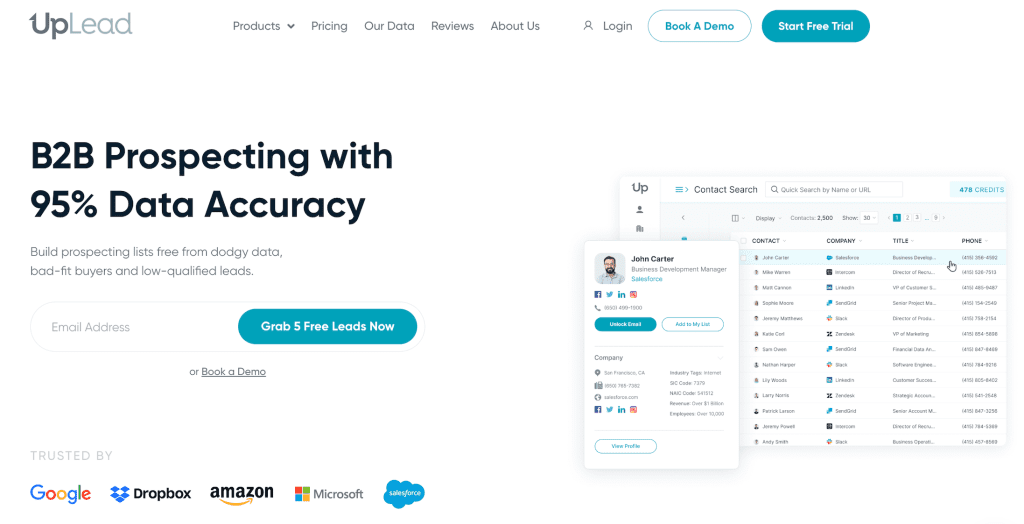
Cold calling is made easy thanks to UpLead’s unparalleled contact database and its robust suite of features. There are over 140+ million B2B contacts with email addresses, many of which have direct dials and mobile numbers in the data sets. You can build a high-quality prospecting list in mere minutes.
Advanced search filtering makes sifting through the UpLead database effortless. There are over 50+ search filters, including demographic, firmographic, and technographic attributes. For example, you can uncover high-intent prospects by company size and technology stack and also identify key decision-makers.
UpLead has superb contact verification, boasting a 95% data accuracy guarantee. Cold calling versus. cold emailing? It doesn’t matter what sales tactics your team is using. You can rest assured you’re getting valid contact information.
Data enrichment features provide you with additional information about prospects, including social media profiles, company news, and job history. Your sales professionals can use these pieces of information to personalize their cold calls to increase their chances of success.
This is an essential tool for serious sales teams, as it saves time and effort by automating finding and qualifying prospects. It increases your reach by providing access to an extensive contact database and several invaluable features.
UpLead is comprehensive, accurate, and easy to use. You can build a comprehensive cold calling list in only minutes. Try UpLead for free today and see how it can help your sales teams get more appointments for cold calls.
FAQs About Landing Appointments With Cold Call Scripts
To ask for an appointment on a cold call, you should be confident, enthusiastic, and respectful of the prospect’s time. Additionally, you should be direct and to the point, suggest several times that work for you, and be ready to handle objections.
To write a call script for setting an appointment, follow these steps:
Grab their attention with a personalized introduction: Start by introducing yourself by name and company, and then explain why you’re calling. Be sure to mention something specific about the prospect or their business. Make sure they know it’s not a generic sales call.
Qualify the prospect: Before you try to schedule an appointment, it’s important to uncover their needs and concerns. You can ask a few screening questions to determine whether they’re a good fit for your product or service.
Pitch your product or service: Now that you’ve qualified the prospect and determined that they’re a good fit, you can pitch your product or service. Ensure that your sales pitch focuses on the benefits of your offering and not the features. The goal is to engage them emotionally first. Help them understand how your product or service can help them achieve their goals or solve their problems.
Ask for the appointment: Once you’ve finished your pitch, it’s time to ask for the appointment. Be direct and to the point, and suggest a few specific times that work for you.
Handle objections: it’s common for prospects to have objections, so be prepared to handle them. Be patient and understanding, and try to answer their questions clearly and concisely.
Close the deal: If the prospect is interested in scheduling an appointment, be sure to close the deal. This means confirming the date and time of the appointment and getting the prospect’s contact information.
To get someone’s attention on a cold call, you must ensure that you do several things. You should be personal and relevant, concise and to the point, provide value, and be enthusiastic and positive.
What You Need to Remember About Using a Cold Call Script to Get Appointments
In the ever-evolving world of sales, cold calling remains a powerful tool for connecting with potential customers and generating leads. While cold-calling memes often portray awkward encounters and rejections, cold-calling can be a rewarding and successful strategy when done effectively.
Leverage well-crafted cold call scripts and cold email templates to master cold outreach. Hone your skills to master the discovery call and stay informed about the latest cold calling statistics and best practices.
By arming yourself with knowledge and employing effective techniques, you can transform cold calling from a dreaded chore into an opportunity to build relationships, generate leads, and, ultimately, achieve your sales goals.
With UpLead, you can hyper-target prospects by narrowing the search down to their industry, role, company size, and buying needs using intent data, and 50+ other filters. You’ll also get their emails and all the necessary information to personalize your meeting requests.
Try UpLead for free today and get prospecting data on 5 leads today.

